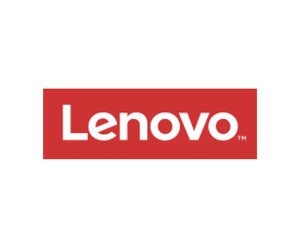What began as crisis response is now par for the course. While most companies don’t have their entire staffs working from home full time, the vast majority offer at least some flexibility in where, when and how employees do their jobs. As of last December, 74 percent of employers offered remote work options, 68 percent of employees said they prefer hybrid work and 28 percent said they were looking for full-time remote options. Just 8 percent said they wanted to be back in the office full time.
The shift away from office environments and desktop devices, however, requires endpoints that balance user preferences with IT priorities. Here’s a look at what users want in laptops and notebooks, what IT teams want to see in these devices and how companies can get the best of both worlds.
DISCOVER: Find out how Lenovo can help you get end-to-end technology solutions
Simple and Streamlined: The User Preference
When it comes to remote work, the employee experience matters. According to a 2020 Harvard Business Review Analytic Services report, 92 percent of business leaders said that employee engagement is critical to company success, while 82 percent believe that employee happiness (and therefore engagement on the job) is tied to how well their workplace technology performs.
Recent employee survey data backs up this belief: Almost half of those asked said that the right devices and applications make them more productive. More than 1 in 5 said that offering the latest technology is the best way for businesses to attract and retain talent. On the flip side, the biggest tech worry for staff is the use of outdated systems that are cumbersome or slow.
92
The percentage of businesses leaders that said employee engagement is critical to company success
Source: Harvard Business Review Analytic Services, Technology’s Make or Break Role in Employee Engagement, July 2020
Strong and Secure: The IT Priority
While staff are looking for devices that make their jobs easier, IT teams have different priorities. According to a new survey from the CyberRisk Alliance, 41 percent of IT professionals ranked endpoint security as one of their top three concerns. About the same number ranked cloud security as one of their top three concerns.
LEARN: Find out why IT asset management is vital to successful digital work
These two concerns are often combined in hybrid work scenarios. Consider the proliferation of nontraditional endpoints such as mobile devices, tablets and laptops. The sheer volume and variety of these endpoints create visibility and security challenges. Cloud services, meanwhile, are often used to bridge the gap between in-office and at-home staff.
The result is an IT environment that is deep and wide: Not only do IT teams have to account for the depth of services available across corporate networks but they also must account for the expanding attack surface of cloud connections. They need technology that is natively secure and helps to limit cloud risk.
EXPLORE: How SSE solutions can help companies streamline security.
A Work Device That Offers The Best of Both Worlds
With the Lenovo ThinkPad series of devices, businesses can get the best of both worlds: ease of use for staff and security for IT teams. This means more streamlined, safer operations.
Employees benefit from features such as a 360-degree hinge that makes it easy to configure devices anywhere, along with a rapid-charge feature that make it possible to get ThinkPads back up to 80 percent power over lunch.
IT teams, meanwhile, get access to ThinkShield, an integrated suite of security features that includes biometric logins, Wi-Fi network spoofing detection and firmware to encrypt key data. They can also expand their security reach with the Lenovo Security Console, which offers industry-leading features for email protection, cloud application defense and endpoint security. Setup is simple: Use the included wizard to connect LSC to Software as a Service apps and enjoy automatic threat protection.
Brought to you by:











